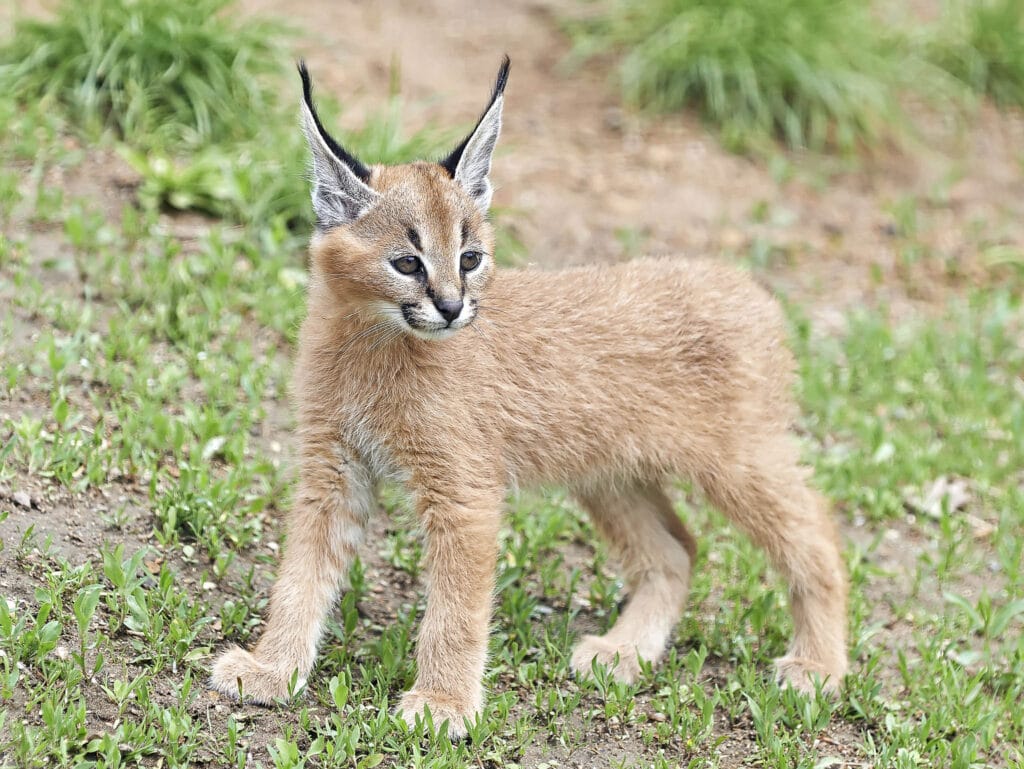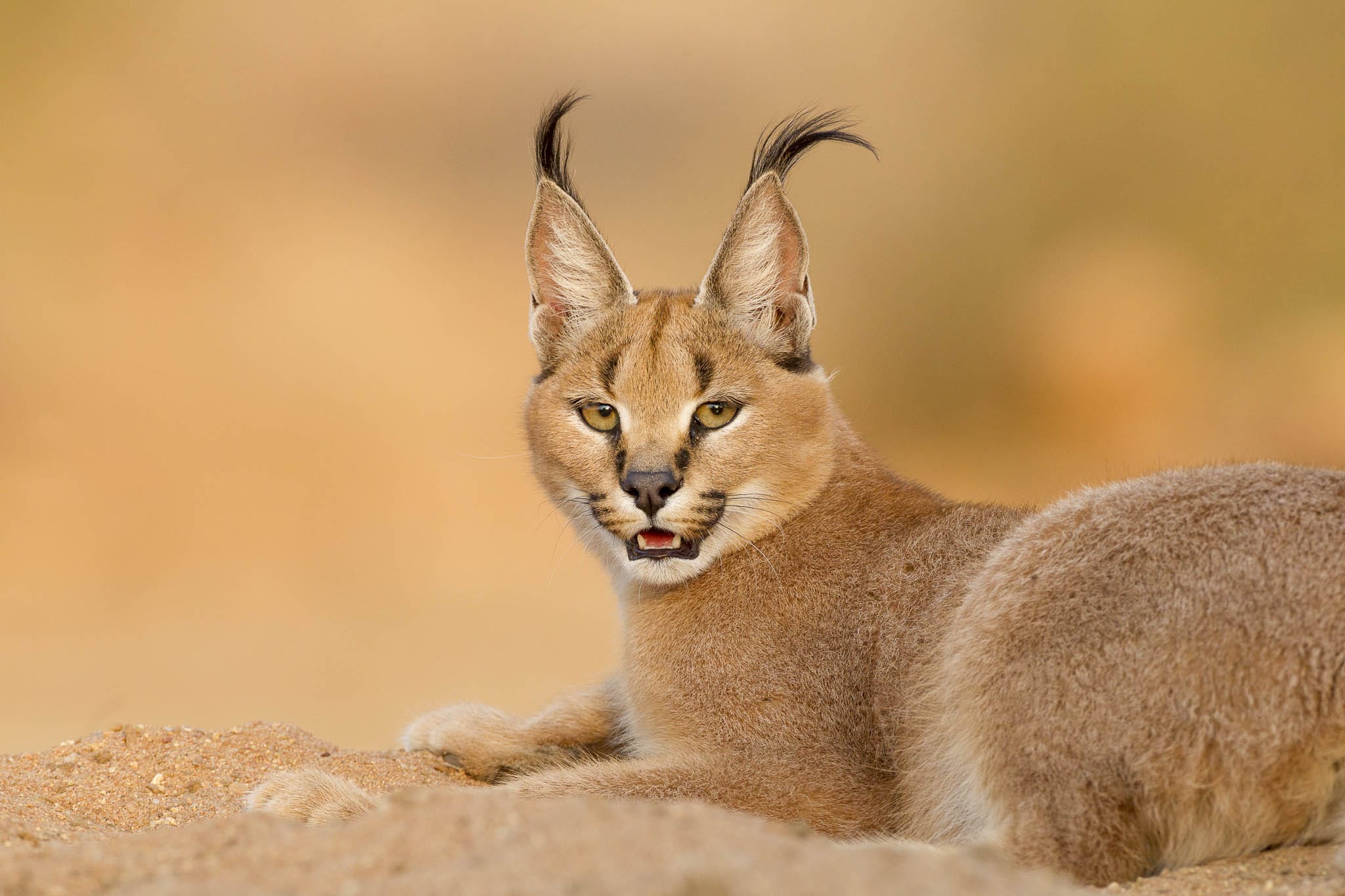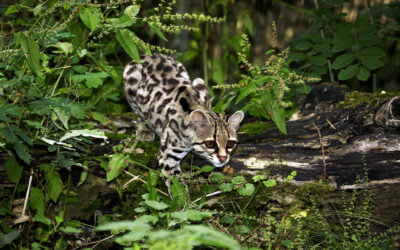Physical description of Caracals
Depending on the individual, a caracal has rusty red or golden brown fur with a white belly. Eyes are marked out in black, as are the whisker areas and the edges of the nose. The caracal has tufted ears, similar to a lynx’s, but longer. They are a distinguishable feature of a caracal that makes recognition easy and serve a useful purpose. The ears are extremely sensitive and used for detecting prey.
The cat is an exceptional jumper enabling it to catch birds, its legs are long, and the hind legs extremely muscular.
Interestingly, the eye color varies from the standard golden to green, and young ones have beautiful blue eyes. The cubs also have less developed ear tufts, though they are still unmistakable caracals. Females are slightly smaller than males, though the size depends on the individual and habitat rather than the gender.
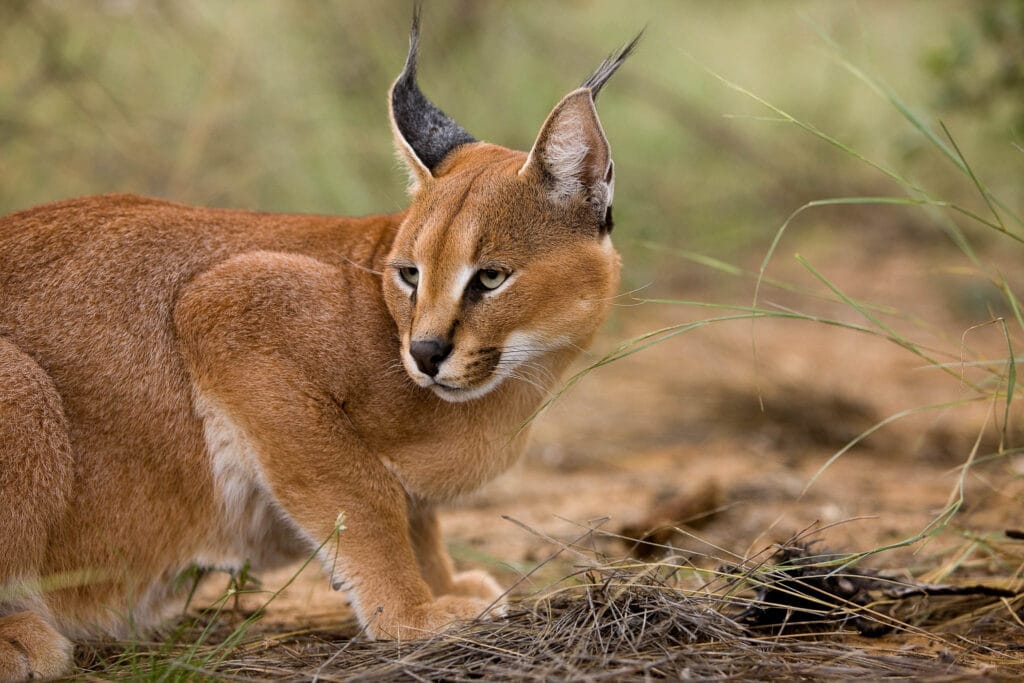
Distribution and habitat of Caracals
Caracals are found in nearly all of Africa and in Central Asia. Preferring open land and scrub forests, the equatorial jungles and the Sahara desert are undesirable areas. In the rest of Africa, the caracal is abundant. So much so that in Southern Africa, it is considered a pest.
The populations in Asia are less numerous. Throughout their range caracals share terrain with similarly sized cats such as the cheetah and serval, and the smaller wildcat.
The habitat of the caracal is extremely diverse, from the dry lands of Southern Africa to the mountains of Ethiopia. They survive well in dry lands but tend to shun deserts.
African caracals avoid the jungle, whilst Asian populations are likely to be found in areas with dense forest cover. Quite simply, the caracal favors a dry savannah with some tree coverage or scrub.
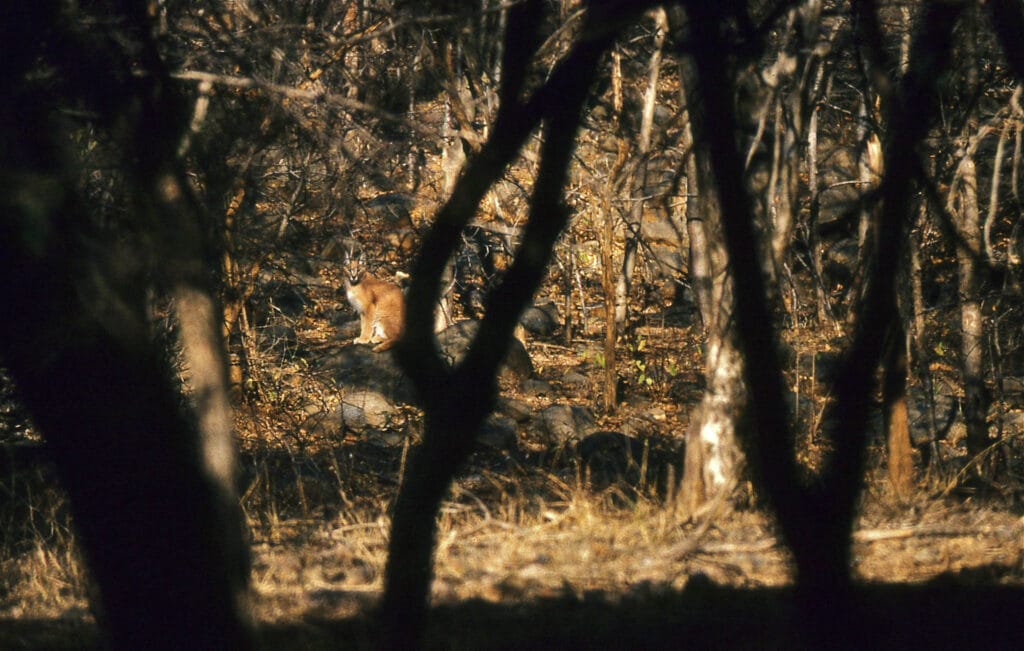
Caracal behaviour
If you are familiar with feline behavior, this section will be unsurprising. Caracals are solitary. Intermingling only for mating, and the time females spend rearing their young.
Caracals have a large range, though it depends on the habitat. In regions where prey is less abundant, the range will be expansive. Consistent with other cats, Caracal males have larger ranges, which often overlap those of females.
The caracal prefers nocturnal hunting. However in some areas, the most opportune prey is diurnal, leading the caracal to adjust itself accordingly to also hunt during the day.
A major difference between the caracal and other cats is its ability to jump. It can leap up to 3 meters into the air to strike down birds whilst hunting. A great feat for a cat that only stands half a meter at the shoulder.
Like their feline counterparts, some vocalizations, scent markings, and touch are all used to communicate with one another.
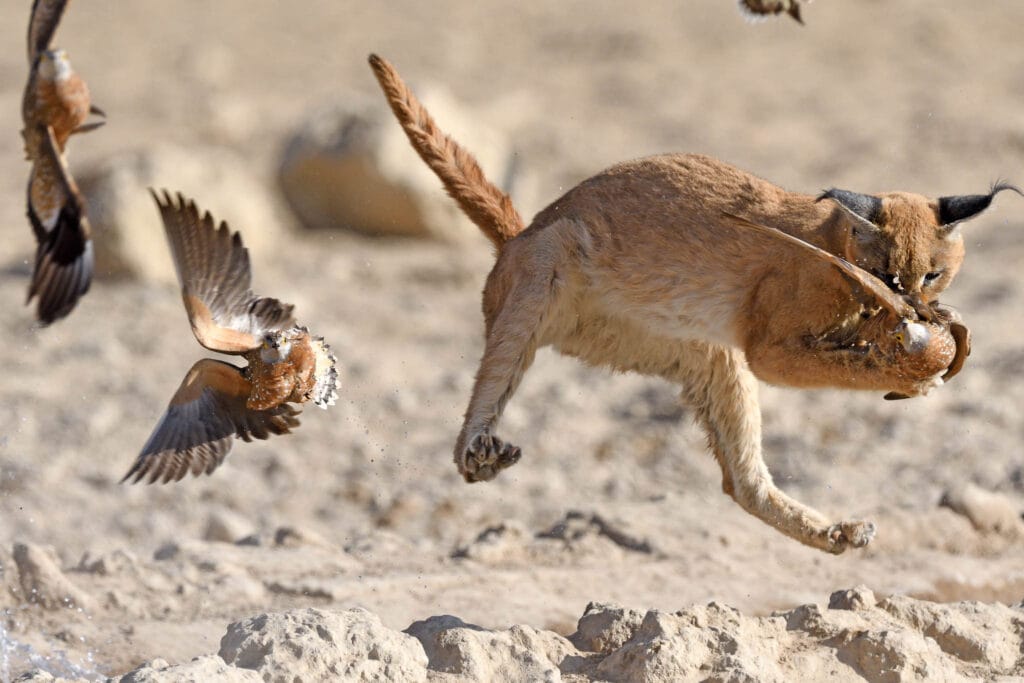
What do Caracals eat?
Small mammals, including small antelopes comprise most of the caracal’s diet. They are renowned bird hunters with spectacular prowess, to leap and knock fleeing birds out of the air.
Their athleticism is not contained to high jumping talents. They also prey on animals that are significantly larger in comparison to their small stature.
Regional diets will vary. African caracals are more reliant on the higher availability of antelope than their Asian cousins.
Mating and Parental care of Caracals
Females indicate their readiness to mate with a chemical signal in their urine. However, the caracal doesn’t have a definitive mating strategy across the species. Different mating tactics are used. Sometimes, a female allows the males to fight over her, and other times, she selects a mate before this occurs. The majority of females have multiple partners and mate numerous times during the courting period, which can be a week long. However this process does not apply to all, but is dependent on the region and population density, among other factors.
Similar to lions, infanticide has been observed in caracals. Males kill off a female’s cubs to influence her estrous cycle so they can sire their own young.
Females have one litter per year, comprising up to three cubs in the wild. The birthing season is year-round but frequently coincides with periods of peak prey within the ecosystem. While the caracal is capable of having more cubs each year, the effort invested by mothers in raising offspring and teaching them to hunt creates this annual limit.
Mothers nest in dark places, protected in rocks or trees, and the young remain shielded for the first month. After this time, they will explore their immediate surroundings whilst nursing continues for up to 4 months. Thereafter, the cubs eat meat regularly although they are still too inexperienced to hunt on their own. The learning period for the cubs under the protection of their mother lasts for a considerable part of the first year.
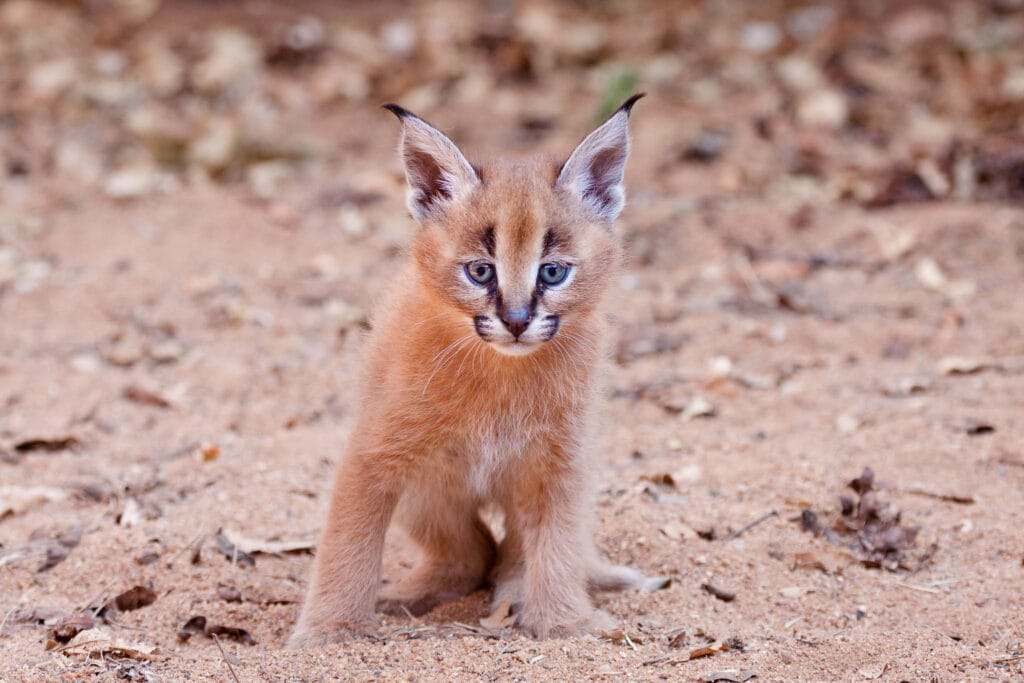
Who preys on Caracals?
Caracals will instinctively defend themselves if attacked. Their only predators consist of lions and hyenas that will not actively challenge them. The largest threat is, of course, humans.
How long do Caracals live?
Age data is as vague and elusive as these wild cats. Contrary to the iconic big cats, caracals are not widely researched.
Caracals and their ecosystem
On par with other predators, caracals have an important role to control population densities of prey species in their ecosystems. A decline in caracal populations would, therefore, change the balance of numerous species with potentially devastating impact on the habitat.
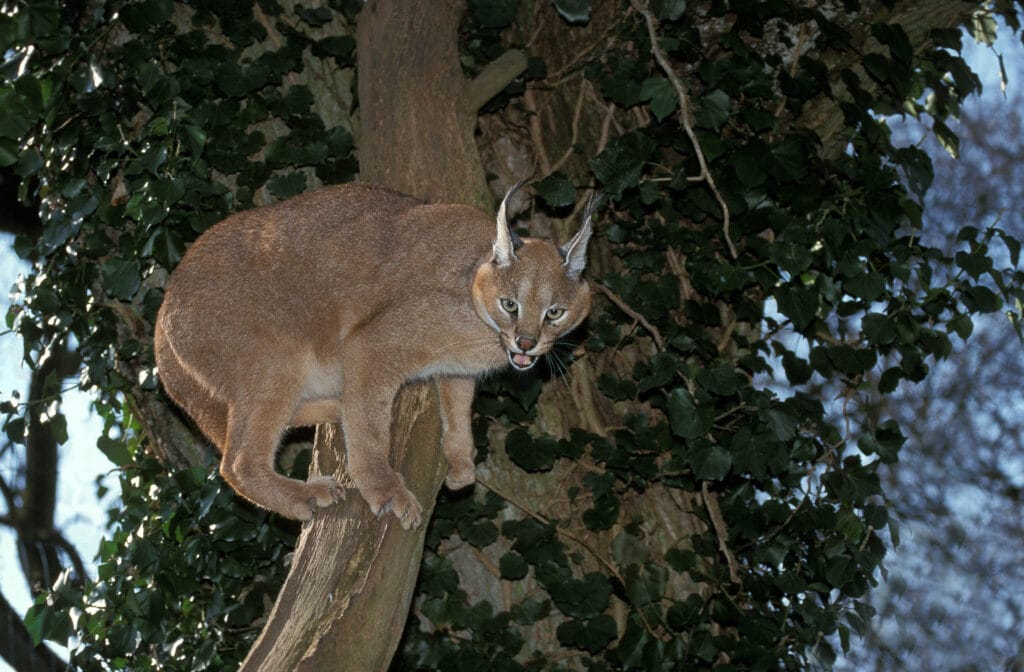
Impact of Caracals on the human economy
Caracals in India were cats of the royal court and trained to catch birds for entertainment. Aside from that role, currently they are not considered to be of notable economic value or exploitative interest to humans.
A caracal trait that piques human interest, though, is its predacious behavior towards livestock. The caracal is a highly adaptable species, likely to resist attempts to eradicate it, whether through habitat change or targeted killing due to a notion that it is a pest.
In Southern Africa, it is considered a nuisance in some farming areas. With a preference for easy prey, the caracal has been known to migrate to areas where livestock is common.
Conservation status and human impact on Caracals
Synonymous with all cats, the largest threat is habitat loss and a decline in the availability of prey.
Asian and African cats are treated differently by CITES, permitting the trade under license of African cats but not Asian ones.
